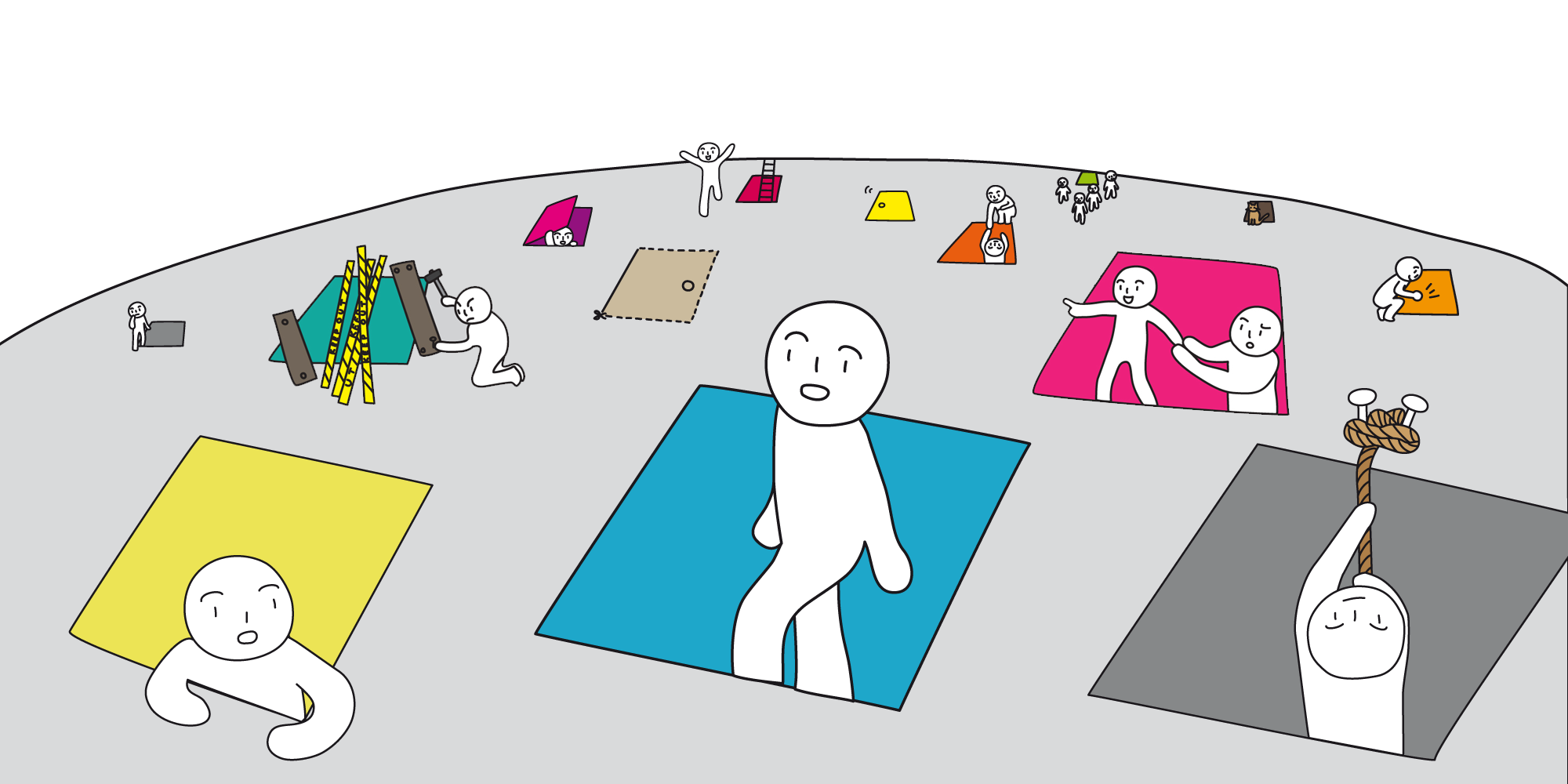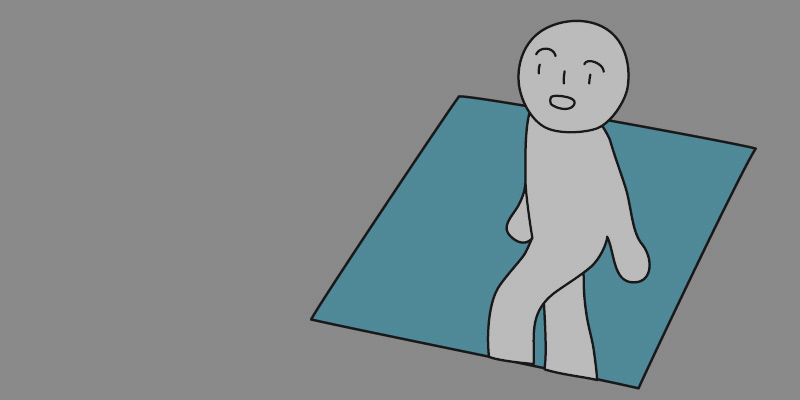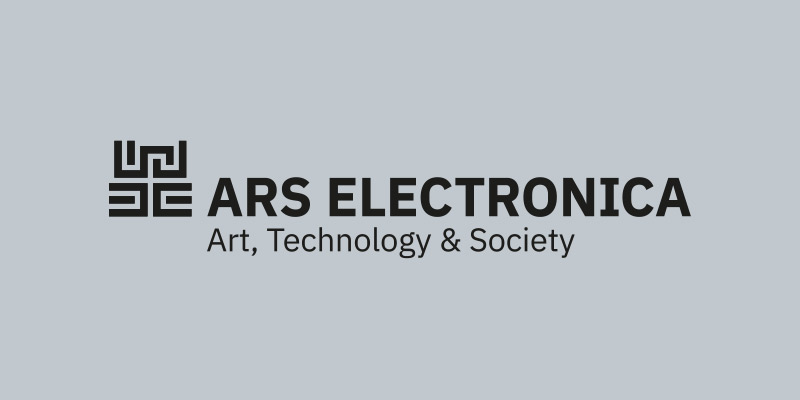POSTCITY
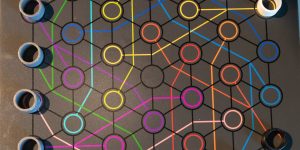
Proelium
Hakan Lidbo (SE)
*Proelium* is a board game with a space-folding board, developed for people with enhanced ability to see patterns.
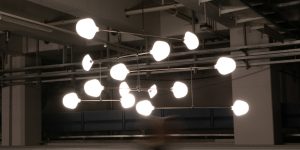
LeveL II
mischer'traxler studio (AT)
LeveL II – a further development of the LeveL – is the fragile balance of perfect system installation.
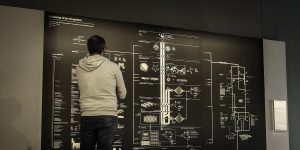
Anatomy of an AI System
Kate Crawford (AU), Vladan Joler (RS)
Anatomy of an AI System is a large-scale map and long-form essay investigating the human labor, data, and planetary resources required to build and operate an Amazon Echo. The exploded view diagram combines and visualizes three central, extractive processes that are required to run a large-scale artificial intelligence system: material resources, human labor, and data. The map and essay consider these three elements across time—represented as a visual description of the birth, life, and death of a single Amazon Echo unit.
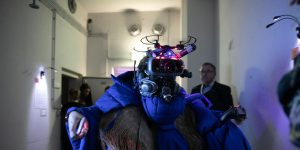
NAMAHAGE in Tokyo
Etsuko Ichihara (JP), ISID OPEN INNOVATION LAB. (JP)
In Japanese folklore, there exists a beast-like deity called the Namahage. NAMAHAGE in Tokyo seeks to reconstruct and implement the NAMAHAGE system in a modern city. It translates and reinterprets for the urban context the ritual's functions, including maintenance of rural community through mutual surveillance, initiation into adulthood, and reinforcement of family bonds.
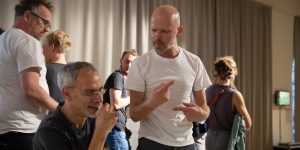
Introduction to Posthuman Aesthetics
Mindaugas Gapševičius (LT/DE)
Installation with devices and videos (2016-2019) These toolkits invite their users to carry out scientific experiments on a DIY level and be able to introduce their simplified, accessible versions to a broader community. The prerogative is to render and outline methods for independent research, opening the black box of empirical experiments to individuals across disciplines. Whether framing the discussion of political, economical, or cultural issues, the toolkits question the creativity of non-humans and do not presume humans to be the only creative force at work.

Theatre in the Digital Age
As an artistic platform for creation, innovation and collaboration, the European Theatre Convention initiated the project European Theatre Lab – Drama goes digital in 2016. This year for the third time, Ars Electronica and ETC collaborate in a symposium with discussion, a hands-on VR workshop by the CyberRäuber and their Fragments | a digital Freischütz, a virtual reality opera in four episodes.
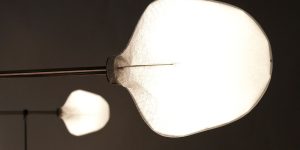
MAM Mario Mauroner Contemporary Art, Salzburg – Vienna
The gallery was founded in 1972 by Mario & Waltraud Mauroner (at the time the gallery was still named Galerie Academia). After more than 40 years of international experience and over 500 exhibitions and participations at international art fairs, an additional 1200 sqm exhibition space on two levels was opened in Vienna, offering spectacular space for the presentation of large-scale sculptures – one of the main focuses of the gallery. Building a second point of interest, the gallery’s program is also dedicated to a range of outstanding and international contemporary artists especially from the Mediterranean area, whose common ground is a steady progression of their respective creative work, developed independently of current trends. Aside from the ground floor and basement, the gallery in Vienna includes a room called roomnumberOne, which is exclusively dedicated to young emerging artists. In October 2014 the newest edition of Mario Mauroner Contemporary Art VIENNA opened – our project space All About Art which is focusing on interdisciplinary projects and where we realised in September 2017 “In relation” – a solo show by mischer’traxler studio.

Thoughts on Day and Night
Maike Alisha Effenberg (DE)
By extending mechanical models from the 60s, you will find here a new approach towards nature and ecosystems. Contemplate the equality of the energy flow within a machine and within an organism. Both receive their energy from the light, react to it, and save it for processes at night. At least, this is what we think they do. So how much life do we find in a machine and how much construction do we find in nature?

The Wall of Gazes
Mariano Sardón (AR), Mariano Sigman (AR/ES)
The Wall of Gazes aims to engage people with those parts of the face that are really seen and those parts that remain “unseen” while attention is focused elsewhere on the portrait.
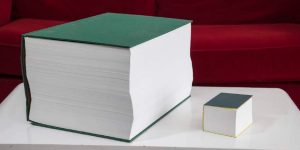
Digital Investigations #1 & #2
Valerio Vincenzo (IT)
The book, weighing about 30 kg, and composed of over 4,000 pages of binary code, is the negative of my photograph, namely its origin information: This sequence of 0 and 1 allows me to visualize the enormous amount of information produced each time I take a photograph. I cannot understand the information in this book, but for a computer the information in the book is the photo.
